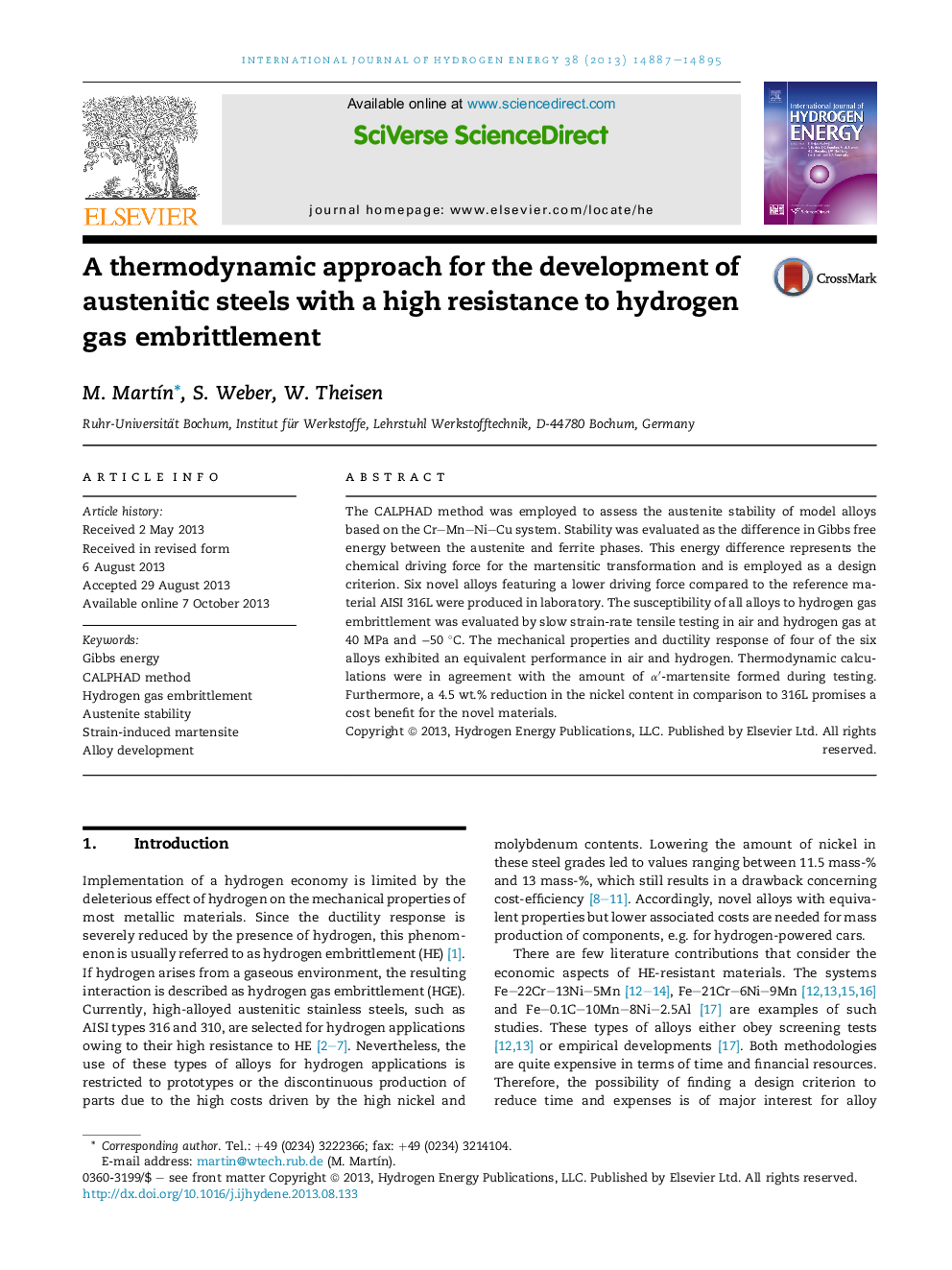| Article ID | Journal | Published Year | Pages | File Type |
|---|---|---|---|---|
| 7721567 | International Journal of Hydrogen Energy | 2013 | 9 Pages |
Abstract
The CALPHAD method was employed to assess the austenite stability of model alloys based on the Cr-Mn-Ni-Cu system. Stability was evaluated as the difference in Gibbs free energy between the austenite and ferrite phases. This energy difference represents the chemical driving force for the martensitic transformation and is employed as a design criterion. Six novel alloys featuring a lower driving force compared to the reference material AISI 316L were produced in laboratory. The susceptibility of all alloys to hydrogen gas embrittlement was evaluated by slow strain-rate tensile testing in air and hydrogen gas at 40 MPa and â50 °C. The mechanical properties and ductility response of four of the six alloys exhibited an equivalent performance in air and hydrogen. Thermodynamic calculations were in agreement with the amount of αâ²-martensite formed during testing. Furthermore, a 4.5 wt.% reduction in the nickel content in comparison to 316L promises a cost benefit for the novel materials.
Related Topics
Physical Sciences and Engineering
Chemistry
Electrochemistry
Authors
M. MartÃn, S. Weber, W. Theisen,
